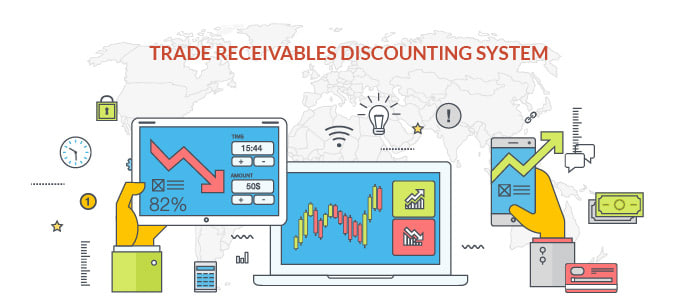Description

Copyright infringement not intended
Context: The Reserve Bank of India has recently announced a new initiative to boost the liquidity and credit availability for MSMEs by allowing insurance companies to participate in the trade receivable discounting system (TReDS), an online platform for financing trade receivables.
Details
- TReDS is an online platform that facilitates the financing of trade receivables of MSMEs from various buyers, including government departments and PSUs, through multiple financiers.
- TReDS was launched in 2014 by the RBI, to ease the cash flow problems of MSMEs and enhance their access to credit. Currently, three entities operate TReDS platforms, processing about Rs 60,000 crore worth of transactions annually.
Trade receivables discounting system (TReDS)
- Trade receivables discounting system (TReDS) is a digital platform that facilitates the financing of trade receivables of micro, small and medium enterprises (MSMEs) from corporate buyers through multiple financiers.
- TReDS enable MSMEs to access funds by selling their trade receivables at a competitive rate through an auction mechanism. TReDS also benefits corporate buyers and financiers by providing them with an opportunity to improve their cash flow and portfolio diversification respectively.
- TReDS is a payment system authorised under the Payment and Settlement Systems Act, 2007 (PSS Act). It is a platform for uploading, accepting, discounting, trading and settling invoices/bills of MSMEs and facilitating both receivables and payables factoring (reverse factoring).
- MSME sellers, corporate and other buyers, including Government Departments and PSUs, and financiers (banks, NBFC-Factors and other financial institutions, as permitted) are direct participants in the TReDS and all transactions processed under this system are "without recourse" to MSMEs.
TReDS offers several benefits to the participants involved:
- For MSME suppliers, TReDS provides a quick and easy way to access funds without collateral and at a competitive rate. It also reduces the risk of default by corporate buyers and improves their credit rating.
- For corporate buyers, TReDS helps them to optimize their working capital management by extending their payment cycle and availing discounts from suppliers. It also enhances their reputation and relationship with MSME suppliers.
- For financiers, TReDS offers a new avenue for lending with low risk and high returns. It also enables them to diversify their portfolio and reach out to a large number of MSMEs.
TReDS also faces some challenges that need to be addressed
- Lack of awareness and adoption: Many MSMEs, corporate buyers and financiers are not aware of or familiar with TReDS and its benefits. There is a need for more education and promotion of TReDS among potential users.
- Regulatory hurdles: TReDS is regulated by the Reserve Bank of India (RBI) and has to comply with various norms and guidelines related to KYC, AML, GST, TDS, etc. These may create operational difficulties and increase costs for TReDS platforms and participants.
- Competition from other modes of financing: TReDS competes with other modes of financing such as bank loans, NBFCs, P2P lending, etc. These may offer better terms or convenience to MSMEs, corporate buyers or financiers depending on their preferences and needs.
Future prospects of TReDS
- TReDS has a huge potential to transform the MSME financing landscape in India. According to a report by CRISIL, TReDS can potentially address 15% of the estimated Rs 6.8 lakh crore annual MSME receivables market in India by 2025. However, this would require concerted efforts from all stakeholders including TReDS platforms, participants, regulators, policymakers and industry associations.
Some of the possible measures that can boost TReDS are:
- Increasing awareness and adoption: More campaigns and workshops can be conducted to educate MSMEs, corporate buyers and financiers about TReDS and its benefits. More incentives and subsidies can be provided to encourage participation in TReDS.
- Simplifying regulatory norms: The RBI can consider relaxing or rationalizing some of the norms and guidelines. This can reduce the compliance burden and cost for TReDS platforms and participants.
- Creating a conducive ecosystem: More collaboration and coordination can be fostered among various stakeholders such as banks, NBFCs, fintech companies, industry associations, etc. This can create a supportive ecosystem for TReDS that leverages each other's strengths and resources.
Conclusion
- The inclusion of insurance companies in TReDS is expected to boost the confidence of financiers who bid for the payables of MSMEs on the platform. Financiers can now avail of an insurance facility to hedge against default risks, especially for low-rated buyers. The premium for insurance will not be levied on the MSME seller, but on the financier or the buyer, as per the business rules of the TReDS platform operators. The insurance facility can be availed at any stage of the transaction, as specified by the platform operators.
- TReDS is a novel system that aims to solve the problem of delayed payments faced by MSMEs in India. It offers multiple benefits to MSME suppliers, corporate buyers and financiers by facilitating the financing of trade receivables through a digital platform. However, TReDS also faces some challenges that need to be overcome to realize its full potential. TReDS has a bright future if all stakeholders work together to create a conducive environment for its growth and development.
Must Read Articles:
MSME SECTOR: https://www.iasgyan.in/daily-current-affairs/msme-sector-14
|
PRACTICE QUESTION
Q. “TReDS Portal” is frequently seen in the news. The Portal is related with;
A) Skill development
B) Employment Registration
C) GST streamlining
D) MSME financing
Answer: D
|

https://economictimes.indiatimes.com/markets/stocks/news/rbi-expands-scope-of-treds-includes-insurers-as-participants/articleshow/100828591.cms?from=mdr













